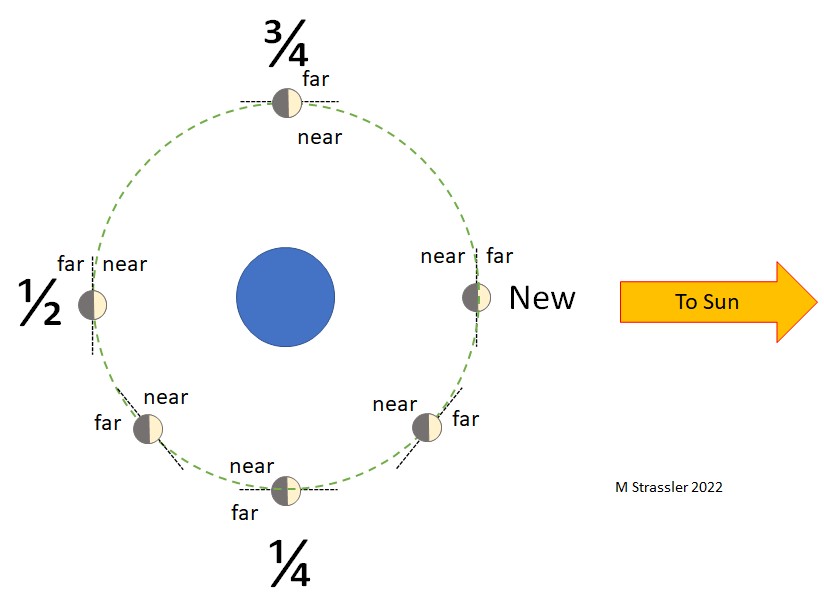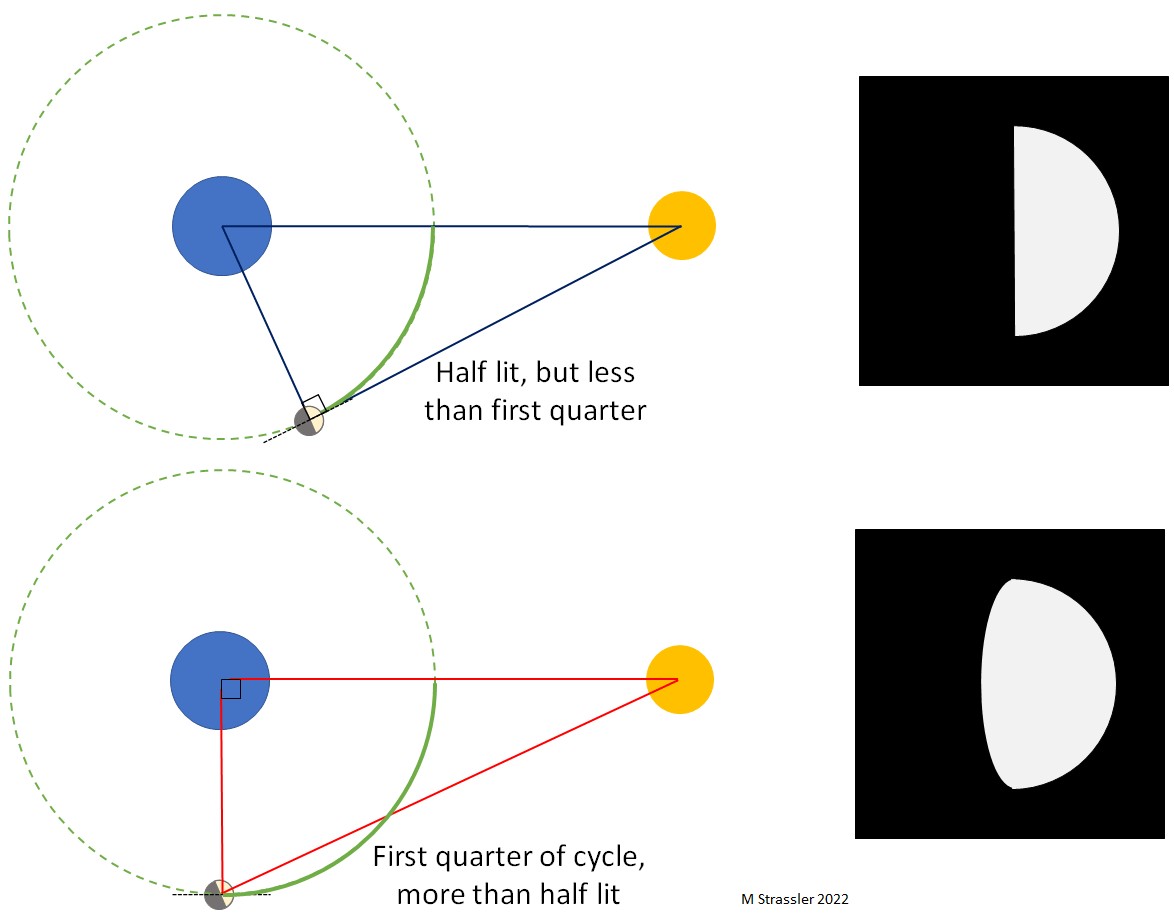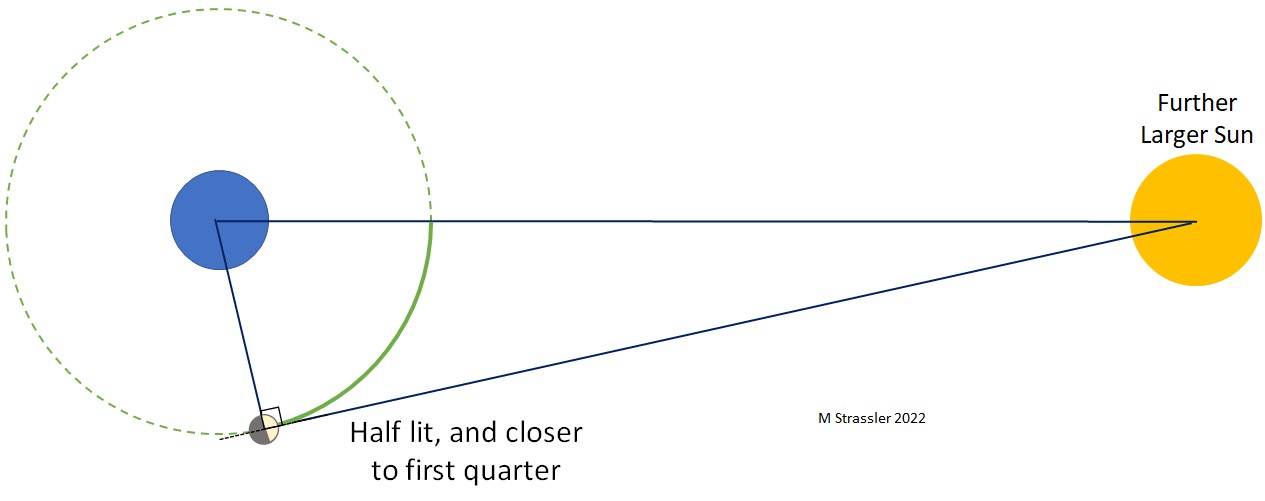How Much Larger Is The Sun Than The Earth? Discover expert insights on HOW.EDU.VN, exploring the size comparison of these celestial bodies and offering a detailed understanding of their dimensions. Delve into astronomical facts and gain valuable knowledge about our solar system.
1. Understanding the Sun and Earth: A Basic Comparison
The Sun and the Earth are two fundamentally different celestial bodies. The Sun, a star, is a massive ball of hot plasma that emits light and heat, sustaining life on Earth. The Earth, on the other hand, is a planet, a rocky sphere that orbits the Sun and supports a diverse range of life forms. The sheer difference in their nature suggests a significant disparity in size. Understanding this size difference is crucial for appreciating the Sun’s role in our solar system and the Earth’s unique position within it.
1.1 What are the Key Differences Between the Sun and the Earth?
The Sun and Earth differ significantly in composition, size, temperature, and function. The Sun is primarily composed of hydrogen and helium undergoing nuclear fusion, producing vast amounts of energy. Earth is composed of various elements and compounds, including iron, silicon, oxygen, and water. The Sun’s diameter is about 109 times that of Earth, and its mass is about 333,000 times greater. The Sun’s surface temperature is around 5,500 degrees Celsius, while Earth’s average surface temperature is around 15 degrees Celsius. The Sun provides light and heat, driving Earth’s climate and supporting life. Earth is a planet that supports a wide array of life.
Table: Key Differences Between the Sun and Earth
| Feature | Sun | Earth |
|---|---|---|
| Composition | Hydrogen, Helium | Iron, Silicon, Oxygen, Water |
| Size | 109 times Earth’s diameter | Smaller, diameter around 12,742 km |
| Mass | 333,000 times Earth’s mass | Smaller, mass around 5.97 x 10^24 kg |
| Surface Temp. | ~5,500 degrees Celsius | ~15 degrees Celsius |
| Primary Function | Provides light and heat | Supports life |




1.2 Why is Understanding the Size Difference Important?
Understanding the size difference between the Sun and Earth helps us comprehend the Sun’s immense power and its influence on our planet. It highlights the delicate balance that allows life to thrive on Earth, as well as the potential consequences of any changes in the Sun’s behavior. It also puts our place in the universe into perspective. The sun, a massive star, dominates our solar system, while earth, a small planet, is uniquely suited for life.
2. Quantitative Analysis: How Much Bigger is the Sun?
To truly grasp the magnitude of the Sun’s size compared to Earth, let’s delve into some quantitative data. We’ll explore the differences in diameter, volume, and mass, providing a clearer picture of the scale of these celestial bodies. This analysis will reveal just how much larger the Sun is than our home planet.
2.1 Comparing Diameters: Sun vs. Earth
The Sun’s diameter is approximately 1.39 million kilometers (864,000 miles), while Earth’s diameter is about 12,742 kilometers (7,918 miles). This means the Sun is roughly 109 times wider than Earth. If you were to line up 109 Earths side by side, they would stretch across the face of the Sun.
2.2 Volume Comparison: How Many Earths Fit Inside the Sun?
Volume is where the size difference truly becomes staggering. The Sun’s volume is approximately 1.3 million times greater than Earth’s. This means you could fit 1.3 million Earths inside the Sun. It’s a mind-boggling number that underscores the Sun’s immense scale.
2.3 Mass Comparison: Sun vs. Earth
The Sun’s mass is about 333,000 times greater than Earth’s. While not as dramatic as the volume difference, this still demonstrates the Sun’s significant gravitational dominance. The Sun’s mass accounts for about 99.86% of the total mass of our solar system, with all the planets, asteroids, and other objects making up the remaining 0.14%.
3. Visualizing the Scale: Analogies and Models
Numbers can sometimes be abstract, so let’s use analogies and models to help visualize the Sun’s size relative to Earth. These comparisons can make the scale more relatable and easier to comprehend.
3.1 If the Earth Were a Basketball…
If Earth were the size of a basketball (about 9.5 inches in diameter), the Sun would be a staggering 86 feet in diameter. That’s nearly the length of a basketball court. This analogy helps to illustrate the immense difference in scale.
3.2 The Sun as a Beach Ball Analogy
Imagine the Sun as a large beach ball. In this scenario, Earth would be about the size of a small marble. This comparison vividly demonstrates the vast size difference between the two celestial bodies.
3.3 Scale Models: Building a Miniature Solar System
Creating a scale model of the solar system can be a fun and educational way to visualize the size difference. Using everyday objects to represent the Sun and Earth, you can gain a better understanding of the scale involved. For example, if the Sun were a soccer ball, Earth would be a tiny bead.
4. The Sun’s Composition and Structure
Understanding the Sun’s composition and structure provides additional context for its immense size and energy output. Let’s explore the layers of the Sun and its primary components.
4.1 What is the Sun Made Of?
The Sun is primarily composed of hydrogen (about 71%) and helium (about 27%). The remaining 2% consists of heavier elements like oxygen, carbon, nitrogen, silicon, magnesium, neon, iron, and sulfur. These elements play a crucial role in the Sun’s energy production and overall structure.
4.2 Layers of the Sun: Core, Radiative Zone, Convective Zone, Photosphere, Chromosphere, Corona
The Sun is structured in distinct layers, each with unique characteristics:
- Core: The innermost layer where nuclear fusion occurs, generating immense energy.
- Radiative Zone: Energy from the core is transported outward via radiation.
- Convective Zone: Energy is transported via convection currents.
- Photosphere: The visible surface of the Sun.
- Chromosphere: A thin layer above the photosphere, visible during solar eclipses.
- Corona: The outermost layer, extending millions of kilometers into space.
4.3 Nuclear Fusion: The Engine of the Sun
The Sun’s energy is produced through nuclear fusion in its core. Hydrogen atoms are fused together to form helium, releasing vast amounts of energy in the process. This energy is what sustains life on Earth. The process is efficient and continuous, ensuring a steady supply of heat and light for billions of years.
5. The Sun’s Impact on Earth
The Sun’s immense size and energy output have a profound impact on Earth, influencing our climate, weather patterns, and even the presence of life.
5.1 How the Sun Influences Earth’s Climate and Weather
The Sun’s energy drives Earth’s climate and weather patterns. Solar radiation warms the Earth’s surface, creating temperature differences that drive wind and ocean currents. The Sun also plays a role in the water cycle, evaporating water from oceans and land, which then falls back to Earth as precipitation.
5.2 The Sun’s Role in Supporting Life on Earth
The Sun is essential for life on Earth. Its light provides energy for photosynthesis, the process by which plants convert carbon dioxide and water into oxygen and energy. The Sun’s warmth also keeps Earth at a temperature that allows liquid water to exist, which is vital for all known life forms.
5.3 Potential Consequences of Changes in the Sun’s Behavior
Changes in the Sun’s behavior, such as increased solar activity or a decrease in energy output, can have significant consequences for Earth. Increased solar activity can disrupt communications systems and power grids, while a decrease in energy output could lead to a cooling of the Earth’s climate.
6. Historical Perspectives: How Ancient Civilizations Viewed the Sun
Ancient civilizations held the Sun in high regard, often viewing it as a deity or a source of life and power. Their understanding of the Sun’s size and distance was limited, but their reverence for it was profound.
6.1 Sun Worship in Ancient Cultures
Many ancient cultures, including the Egyptians, Greeks, and Romans, worshipped the Sun as a god. The Egyptians, for example, revered the Sun god Ra, who was believed to travel across the sky each day in a solar barge. The Greeks associated the Sun with the god Helios, while the Romans worshipped Sol.
6.2 Early Estimates of the Sun’s Size and Distance
Ancient astronomers attempted to estimate the Sun’s size and distance using basic geometry and observations. While their estimates were not accurate by modern standards, they laid the groundwork for future scientific advancements. For example, Aristarchus of Samos, a Greek astronomer, proposed a heliocentric model of the solar system and attempted to measure the Sun’s distance.
6.3 The Evolution of Our Understanding of the Sun
Over time, our understanding of the Sun has evolved dramatically. From ancient myths and legends to modern scientific theories, our knowledge of the Sun has grown exponentially. Today, we have sophisticated tools and techniques that allow us to study the Sun in unprecedented detail.
7. Modern Measurement Techniques: How We Know the Sun’s Size
Modern measurement techniques have allowed us to determine the Sun’s size and distance with incredible precision. These techniques rely on advanced instruments and mathematical models.
7.1 Using Telescopes and Spacecraft to Measure the Sun
Telescopes and spacecraft play a crucial role in measuring the Sun. Space-based observatories, such as the Solar Dynamics Observatory (SDO), provide continuous, high-resolution images of the Sun, allowing scientists to study its surface and atmosphere.
7.2 Parallax and Other Astronomical Techniques
Parallax is a technique used to measure the distance to nearby stars and other celestial objects. By measuring the apparent shift in an object’s position as the Earth orbits the Sun, astronomers can calculate its distance. Other techniques, such as radar ranging, are also used to measure distances within the solar system.
7.3 The Precision of Modern Measurements
Modern measurement techniques have allowed us to determine the Sun’s size and distance with remarkable precision. We now know the Sun’s diameter to within a few kilometers, and its distance to within a few thousand kilometers.
8. The Sun’s Place in the Solar System and Beyond
The Sun is the center of our solar system, and its size and mass dictate the orbits of the planets and other celestial bodies. Understanding the Sun’s place in the solar system provides context for its importance and influence.
8.1 The Sun as the Center of Our Solar System
The Sun’s gravitational pull holds the solar system together. Planets, asteroids, and comets all orbit the Sun, following paths determined by its mass and gravitational field. The Sun’s immense size and mass make it the dominant object in our solar system.
8.2 Comparing the Sun to Other Stars in the Galaxy
While the Sun is a large and powerful star, it is not the largest or most powerful star in the galaxy. Many other stars are much larger and more massive than the Sun. However, the Sun is a relatively stable star, which is important for supporting life on Earth.
8.3 The Sun’s Role in the Milky Way Galaxy
The Sun is just one of billions of stars in the Milky Way galaxy. It orbits the center of the galaxy, along with all the other stars, gas, and dust. The Sun’s position in the galaxy is relatively unremarkable, but its presence is essential for life on Earth.
9. Fun Facts and Trivia About the Sun
To add a bit of levity and further engage your interest, here are some fun facts and trivia about the Sun.
9.1 The Sun’s Light Takes About 8 Minutes to Reach Earth
Despite traveling at the speed of light, it takes about 8 minutes for sunlight to reach Earth. This means that when you look at the Sun, you are seeing it as it was 8 minutes ago.
9.2 The Sun is Getting Brighter Over Time
The Sun is gradually getting brighter over time. As it ages, it burns through its hydrogen fuel, causing it to become hotter and more luminous.
9.3 Solar Eclipses: A Rare and Spectacular Phenomenon
Solar eclipses occur when the Moon passes between the Sun and Earth, blocking the Sun’s light. These events are rare and spectacular, offering a unique opportunity to observe the Sun’s corona.
10. How.EDU.VN: Your Source for Expert Astronomical Insights
At HOW.EDU.VN, we are dedicated to providing you with expert insights and comprehensive knowledge on a wide range of topics, including astronomy. Our team of experienced professionals and academics are here to answer your questions and help you expand your understanding of the universe.
10.1 Connect with Experts on Astronomy at HOW.EDU.VN
Do you have questions about the Sun, the Earth, or other astronomical topics? Our team of experts is here to help. Connect with us at HOW.EDU.VN to get answers to your questions and explore the wonders of the universe.
10.2 Personalized Guidance for Understanding Complex Topics
We offer personalized guidance to help you understand complex topics like the size comparison of the Sun and Earth. Our experts can provide tailored explanations and resources to meet your specific needs and interests.
10.3 Explore a Wide Range of Educational Resources
HOW.EDU.VN offers a wide range of educational resources, including articles, videos, and interactive tools, to help you learn about astronomy and other subjects. Our resources are designed to be engaging, informative, and accessible to learners of all ages and backgrounds.
Ready to delve deeper into the mysteries of the universe? Contact HOW.EDU.VN today for expert guidance and personalized insights. Our team of over 100 distinguished PhDs is prepared to address your inquiries and expand your understanding. Don’t let your questions linger – reach out now for comprehensive answers and unparalleled expertise.
Address: 456 Expertise Plaza, Consult City, CA 90210, United States
WhatsApp: +1 (310) 555-1212
Website: HOW.EDU.VN
FAQ: Frequently Asked Questions About the Sun and Earth’s Size
Here are some frequently asked questions about the size of the Sun relative to Earth, along with expert answers from how.edu.vn.
1. How much larger is the Sun than the Earth in terms of diameter?
The Sun is approximately 109 times wider than Earth.
2. How many Earths can fit inside the Sun?
About 1.3 million Earths can fit inside the Sun.
3. What is the mass of the Sun compared to Earth?
The Sun’s mass is about 333,000 times greater than Earth’s.
4. What is the Sun primarily made of?
The Sun is primarily composed of hydrogen (about 71%) and helium (about 27%).
5. How does the Sun influence Earth’s climate?
The Sun’s energy drives Earth’s climate and weather patterns, creating temperature differences that drive wind and ocean currents.
6. Why is the Sun important for life on Earth?
The Sun provides light for photosynthesis and warmth that allows liquid water to exist, both vital for life.
7. How do scientists measure the size and distance of the Sun?
Scientists use telescopes, spacecraft, parallax, and other astronomical techniques to measure the Sun’s size and distance.
8. How long does it take for sunlight to reach Earth?
It takes about 8 minutes for sunlight to reach Earth.
9. Is the Sun getting bigger or smaller?
The Sun is gradually getting brighter over time as it ages and burns through its hydrogen fuel.
10. What are solar eclipses, and why are they important?
Solar eclipses occur when the Moon passes between the Sun and Earth, blocking the Sun’s light. They offer a unique opportunity to observe the Sun’s corona.
